Planning your own trip? Prepare for your trip
Use Rough Guides' trusted partners for great rates
Plan and book your private, tailor-made tour with vetted local experts
Some travel brochures still bill Nazaré as one of Portugal’s most picturesque seaside resorts, and if you visit in the quieter months, you might just agree. Out of season, the town’s sweeping beach and steep headland feel cinematic, and the fishing heritage is easier to spot. In summer, though, Nazaré is packed to bursting, with queues for restaurants, rows of souvenir stalls, and a hard sell from touts offering menus and rooms. The elderly women in traditional headscarves and embroidered aprons are still here, but many now sell trinkets instead of fresh fish. The colorful sardine boats that once lined the beach at night have long since moved to a modern harbor.
If you arrive knowing this is no quaint fishing village, Nazaré can be a lot of fun. It has all the bustle, energy, and facilities of a busy resort, from family-friendly restaurants to late-night bars. And it is not just summer that draws the crowds. New Year’s Eve brings one of Portugal’s biggest beach parties, while February’s Carnaval erupts into a riot of costumes, music, and dancing that goes on until dawn.

Hey, I’m Joel, your Portugal travel expert, and I’ve been to enough coastal towns to know that Nazaré is unlike anywhere else. Famous for record-breaking waves and a beach that feels like it runs forever, it’s a place where fishing traditions, surf culture, and resort energy all collide. This Nazaré travel guide will give you the essentials: how to get here, when to come, and where to base yourself.
Come outside the high summer rush and you’ll see hints of the fishing village Nazaré once was: women in headscarves selling dried fish, narrow lanes climbing up to the Sitio clifftop, and colorful boats on the sand. In peak season, expect a lively beach scene, wall-to-wall restaurants, and the kind of cheerful chaos that comes with a holiday crowd. And if you’re here in winter, you might witness the giant Atlantic swells that draw big-wave surfers from around the world.
Joel's tip
Take the funicular up to Sítio just before sunset. The lookout over Praia da Nazaré glows gold, and you can watch the lights come on in the lower town.
Best time to visit
Late spring and early autumn are ideal, with warm weather, calmer seas, and fewer crowds. July and August are hot and busy, with packed beaches and longer waits at restaurants. Winter is cooler but attracts surf fans eager to see Nazaré’s world-famous waves.
How to get to Nazaré
From Lisbon, direct buses run to Nazaré in about two hours. From Porto, the trip takes around three and a half hours with a change in Coimbra. Driving is straightforward via the A8 motorway; parking fills quickly in summer, so arrive early or look for spaces uphill in Sítio.
Best areas to stay in Nazaré
Nazaré sits on Portugal’s central Atlantic coast, roughly halfway between Lisbon and Porto. It is about 120 km north of Lisbon, a two-hour drive via the A8 motorway, and just over three hours from Porto.
Often ranked among the best places to visit in Portugal, Nazaré combines a wide sandy beach with a dramatic clifftop lookout at Sítio, where some of the world’s biggest surfable waves crash in winter. The town makes a memorable stop on any Portugal itinerary, if you are chasing surf, seafood, or coastal scenery. From here, you can explore nearby fishing towns like Peniche, visit the medieval streets of Óbidos, or head inland to Alcobaça’s UNESCO-listed monastery.


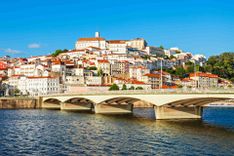
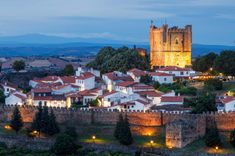

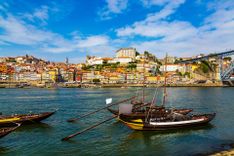










Nazaré is compact and easy to explore, but its three distinct areas, the beachside lower town, the clifftop Sítio, and the hillside Pederneira, mean you will be moving between sea level and high ground. Walking covers most needs in the lower town, while the funicular or a short bus ride takes care of the climb to Sítio.
Suppose you’re wondering how many days in Nazaré are enough. In that case, you can see the main sights in a single full day: stroll the beachfront promenade, ride the funicular to Sítio for clifftop views, visit the Sanctuary of Our Lady of Nazaré, and enjoy a seafood lunch. Staying overnight lets you experience the town after the day-trippers leave, when the beach quiets, the lights reflect on the water, and the atmosphere becomes more relaxed. It’s a rewarding stop on any Portugal coastal tour.
Two days give you time to enjoy the beach and the old fishing quarter at a slower pace, plus take a boat trip, visit nearby Óbidos, or explore Alcobaça’s UNESCO-listed monastery. In winter, an extra day also increases your chances of seeing the giant waves that made the town world-famous among surfers.
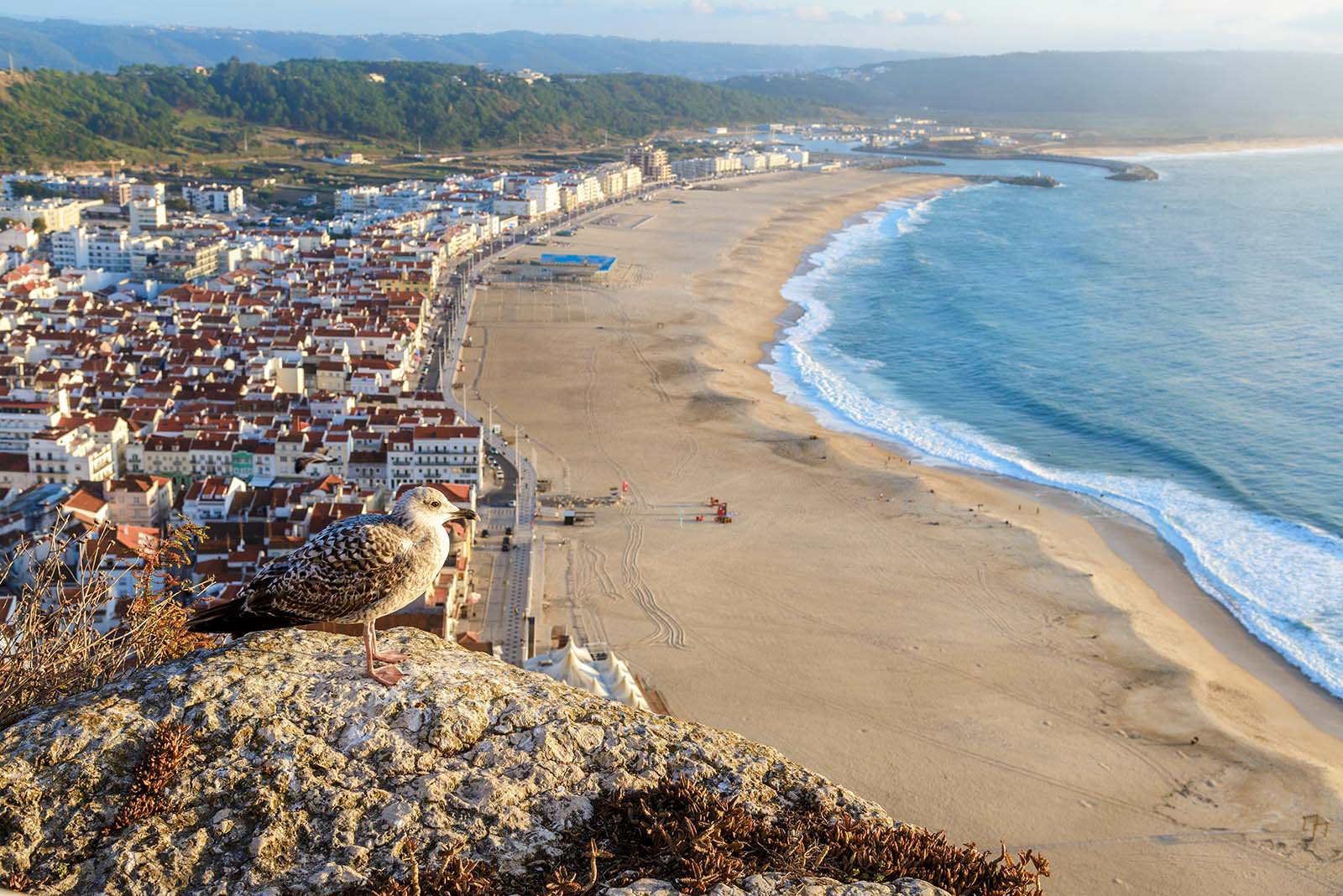
Aerial view of Nazare city and Praia da Nazare Beach, Portugal © Shutterstock
Nazaré has everything from small family-run guesthouses to modern hotels, with most accommodation clustered either by the beach or up on the cliffs in Sítio. Here’s where to base yourself depending on how you like to travel.
Nazaré may be easy to cover in a day, but the real charm comes when you slow down and notice the details. The salt on the wind, the women in layered skirts, and the way the cliffs change color as the light shifts all make this fishing town turned surf capital a place worth lingering in. Here are the highlights that reward taking your time.
Praia do Norte is one of the most famous surf spots in the world and regularly features on lists of the best beaches in Portugal. In winter, the Nazaré Canyon beneath the sea funnels Atlantic swells straight toward shore, creating waves that can reach 80 to 100 feet. The red-roofed lighthouse offers the best vantage point and has a small exhibition explaining the science and surf records. Even in summer, when the water is calmer, the beach feels wild and untamed.
The air is fresh with salt spray, the dunes roll down toward the Atlantic, and there is a sense of space you will not find on the main town beach. Bring binoculars to spot surfers in action and visit early or late in the day for the most dramatic light on the cliffs.
Since 1889, the funicular has connected the lower town to the clifftop district of Sítio in just a few minutes. The glass-fronted carriages slowly reveal the sweep of Praia da Nazaré as you rise above the rooftops. At the top, Sítio opens onto a main square with the Sanctuary of Our Lady of Nazaré, a scattering of cafés, and views over both the main beach and Praia do Norte.
This part of town has a calmer feel in summer, with breezes carrying the scent of the sea. Take the ride just before sunset for golden light over the water and a relaxed evening wander through the quieter streets before descending. The service runs regularly during the day and tickets are inexpensive.
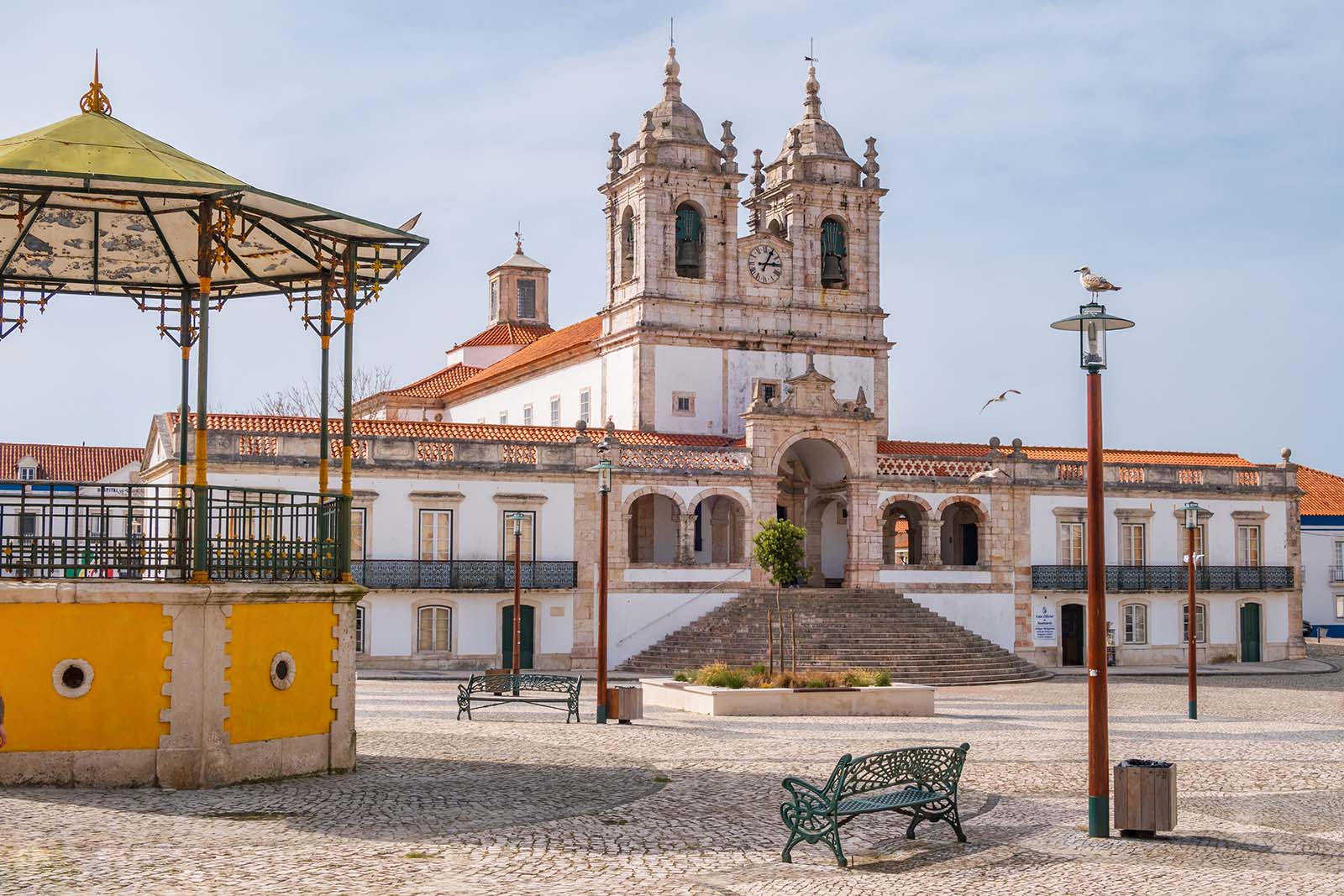
Sanctuary of Our Lady of Nazaré city (Santuario Nossa Senhora de Nazaré), in Portugal © Shutterstock
The Sanctuary of Our Lady of Nazaré is the spiritual heart of Sítio and a place of pilgrimage for centuries. According to legend, a small statue of the Virgin Mary was brought here from Nazareth in the fourth century. In 1182, she is said to have saved a knight from falling over the cliff while hunting, an event still remembered in local devotion.
Inside the church, blue-and-white azulejo panels line the walls, painted ceiling panels depict biblical scenes, and the gilded altarpiece glows in the sunlight. The statue itself rests in a small chapel behind the main altar. Outside, the square is lively with stalls and cafés, and you may see women in traditional seven-skirt outfits selling roasted nuts or homemade sweets. Visit in the early morning for a quieter atmosphere or during one of the religious festivals for processions and music.
The beachfront promenade along Praia da Nazaré is the social hub of the lower town. In summer, it is alive with the smell of grilling sardines, the sound of buskers, and the chatter of holidaymakers. Wooden racks display fish drying in the sun, a tradition that has endured even as the town has changed. The sand here is soft and golden, stretching for over a kilometre, and there is plenty of space for sunbathing or a long barefoot walk. Sunset is particularly beautiful when the cliffs of Sítio catch the fading light and the fishing boats sway gently in the shallows.
In the quieter months, the promenade has a slower pace, perfect for a relaxed stroll with a coffee from one of the many pavement cafés. Benches line the path, offering places to pause and watch the waves roll in.
Pederneira sits on a hill behind the main beach and feels like a different world compared to the bustle of the lower town. This was the original settlement before the fishing community moved closer to the sea. Today, it is a peaceful residential area with cobbled lanes, whitewashed houses, and churches decorated with traditional tiles.
From the Miradouro do Pederneira viewpoint, you can see the curve of Praia da Nazaré and the Atlantic stretching to the horizon. The light here is especially soft in the morning, making it a good time for photography. Few visitors make it up this way, so it is ideal if you want to step away from the busy promenade. The climb is steep, but if you have a car, parking here is usually easier, and the walk back down offers new angles on the beach below.
The Dr. Joaquim Manso Museum offers a quieter, more reflective side to Nazaré. Set in Sítio, this small museum tells the story of the town’s fishing roots long before it became famous for giant waves. Inside, you will find traditional wooden boats painted in bold colors, fishing nets and gear worn smooth by decades of use, and photographs showing the beach when it was still lined with hauled-up vessels.
Displays explain the seven-skirt costume worn by Nazaré’s women, once practical workwear adapted for the harsh Atlantic weather. It is an ideal stop if you want a break from the crowds and a deeper understanding of the community’s traditions. The museum pairs well with a visit to the lighthouse or sanctuary nearby.
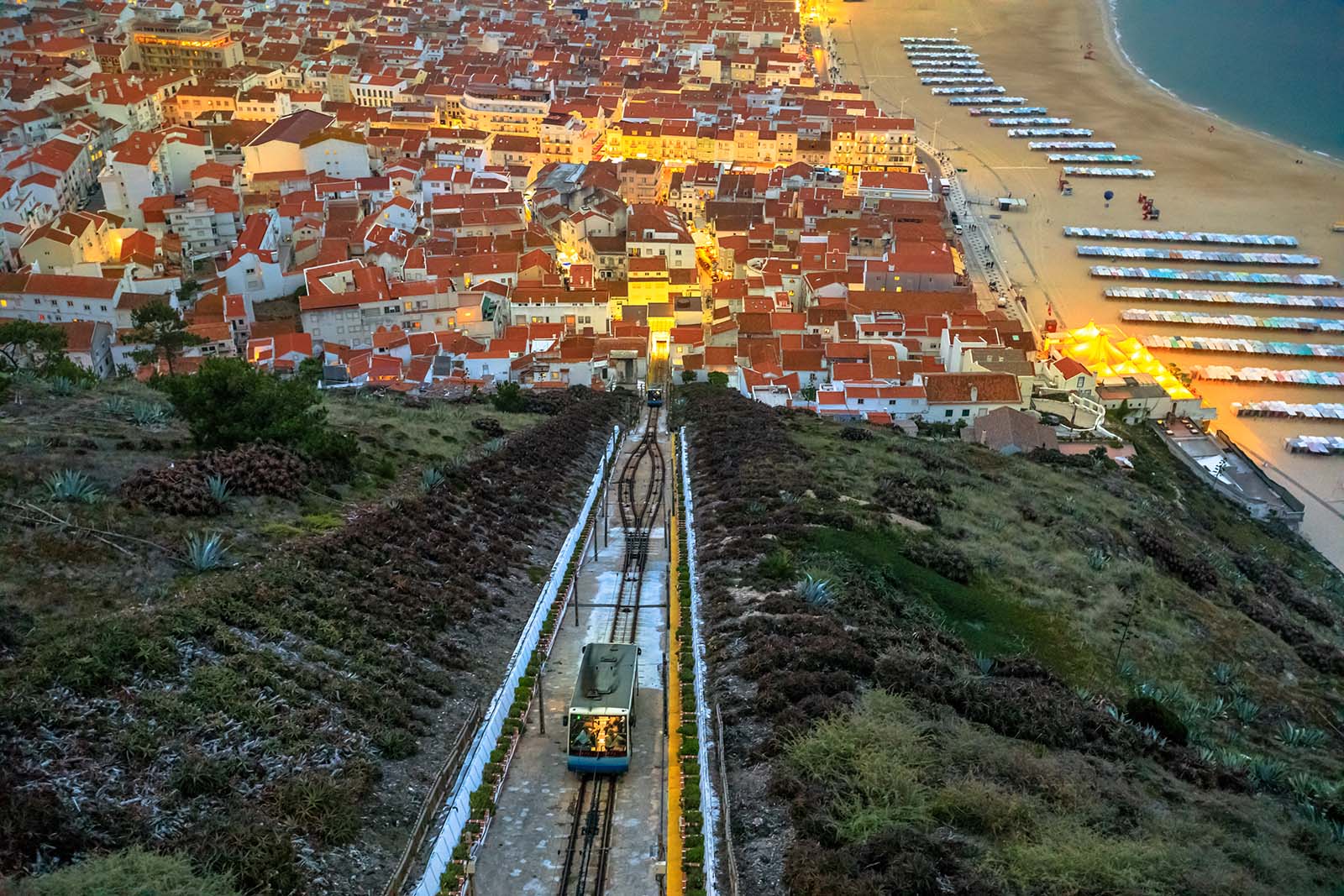
Nazare Funicular from Sitio © Shutterstock
Eating in Nazaré is a celebration of the Atlantic’s bounty. Along the beachfront and in the lanes behind it, you will find restaurants serving grilled sardines, seafood rice rich with clams and prawns, and caldeirada, a slow-cooked fish stew layered with vegetables. Many menus feature catches landed that same morning, and you might see fishermen unloading crates at the harbor.
For dessert, try pão-de-ló, a feather-light sponge, or tigelada, a baked custard served in earthenware pots. In summer, tables with sea views fill quickly, so arrive early or reserve ahead. In the quieter months, there is time to linger over a meal and chat with owners who often have stories about the day’s fishing and the changing face of the town.
A boat trip from Nazaré gives you a fresh perspective on the coastline and the sea that shapes life here. Departing from the marina or the main beach, you can sail past the cliffs of Sítio, glide over the entrance to the Nazaré Canyon, and, in calm weather, venture toward nearby coves and beaches. In summer, the clear water and calm swells make for an easy outing, and you may spot dolphins playing in the wake.
Many trips include commentary on the geology and legends of the area, adding depth to the views. Mornings usually bring calmer seas and gentler light, while late afternoons can reward you with a sunset over the Atlantic as you return to shore.
Just fifteen minutes inland lies Alcobaça, home to one of Portugal’s most remarkable Gothic monuments. The twelfth-century Alcobaça Monastery, a UNESCO World Heritage Site, has a vast and austere nave, elegant cloisters, and the intricately carved tombs of King Pedro I and Inês de Castro, whose tragic love story is part of Portuguese folklore. Spend time in the kitchen, with its enormous chimney, and the refectory, where monks once dined in silence.
The surrounding town is worth a short wander, especially for its pastry shops, where you can sample cornucópias, delicate cones of crisp pastry filled with egg cream. Alcobaça pairs easily with a half-day in Nazaré or can be part of a wider loop including the medieval walled town of Óbidos.
Miradouro do Suberco, in the clifftop district of Sítio, offers one of the finest views of Portugal’s central coast. From this high perch, you can see the entire curve of Praia da Nazaré below, the lighthouse guarding Praia do Norte, and on clear days a stretch of coastline that seems endless.
Arrive in the late afternoon to watch the light shift across the sand and sea, and stay as the sky turns orange, pink, and purple. The square beside the viewpoint has small cafés for a pre-sunset coffee or a post-sunset drink. In winter, the crisp air and lower sun make for especially clear, vivid colors. It is a simple experience, but one that captures the essence of Nazaré’s drama and beauty.
Nazaré has an Atlantic maritime climate, with mild, wet winters and warm, dry summers. Sea breezes keep peak summer temperatures lower than inland towns, but the humidity can make hot days feel warmer. Winters are generally mild, although coastal winds can be bracing. Average highs range from about 57°F (14°C) in January to 77°F (25°C) in August. Many travelers consider late spring and early autumn the best time to visit Portugal, and these seasons suit Nazaré perfectly, offering warm weather, lighter crowds, and good conditions for both beach days and coastal walks. For current forecasts, check the IPMA (Portuguese Institute for Sea and Atmosphere).
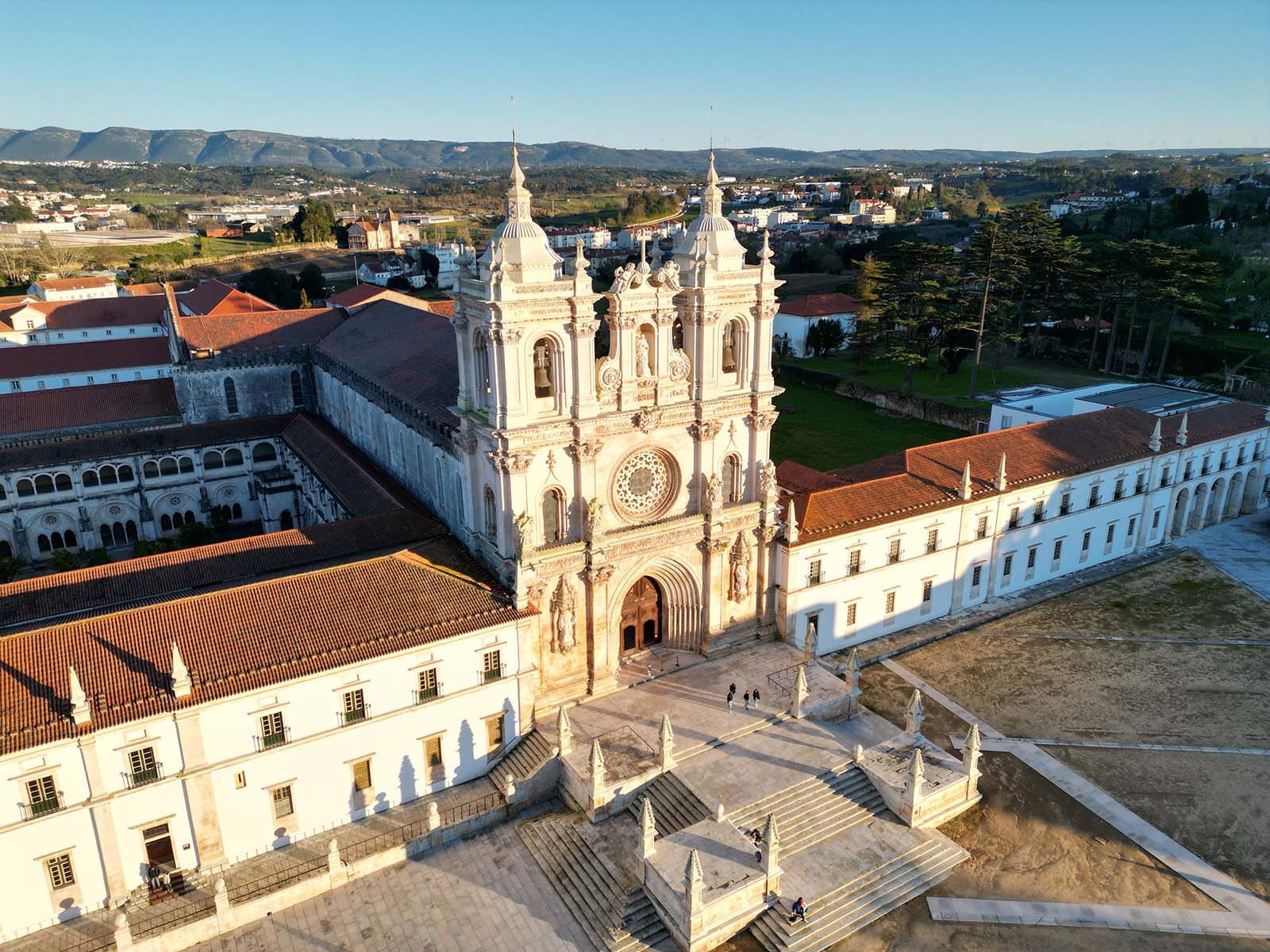
Catholic monastic complex located in the town of Alcobaça © Shutterstock
Nazaré’s dining scene blends its fishing heritage with a lively seaside atmosphere. Many restaurants are family-run, serving fresh Atlantic seafood alongside hearty dishes from Portugal’s central coast. Expect grilled sardines straight from the beach barbecue, steaming seafood stews, and simple desserts made with eggs and sugar. Menus often change daily, reflecting whatever the boats brought in that morning.
Here are some unique experiences you can add to your Nazaré tailor-made trip. All are private, flexible, and led by guides who know the area’s history, culture, and landscapes inside out.
Discover Portugal's most captivating stories
Use Rough Guides' trusted partners for great rates
written by
Olga Sitnitsa
Online editor at Rough Guides, specialising in travel content. Passionate about creating compelling stories and inspiring others to explore the world.